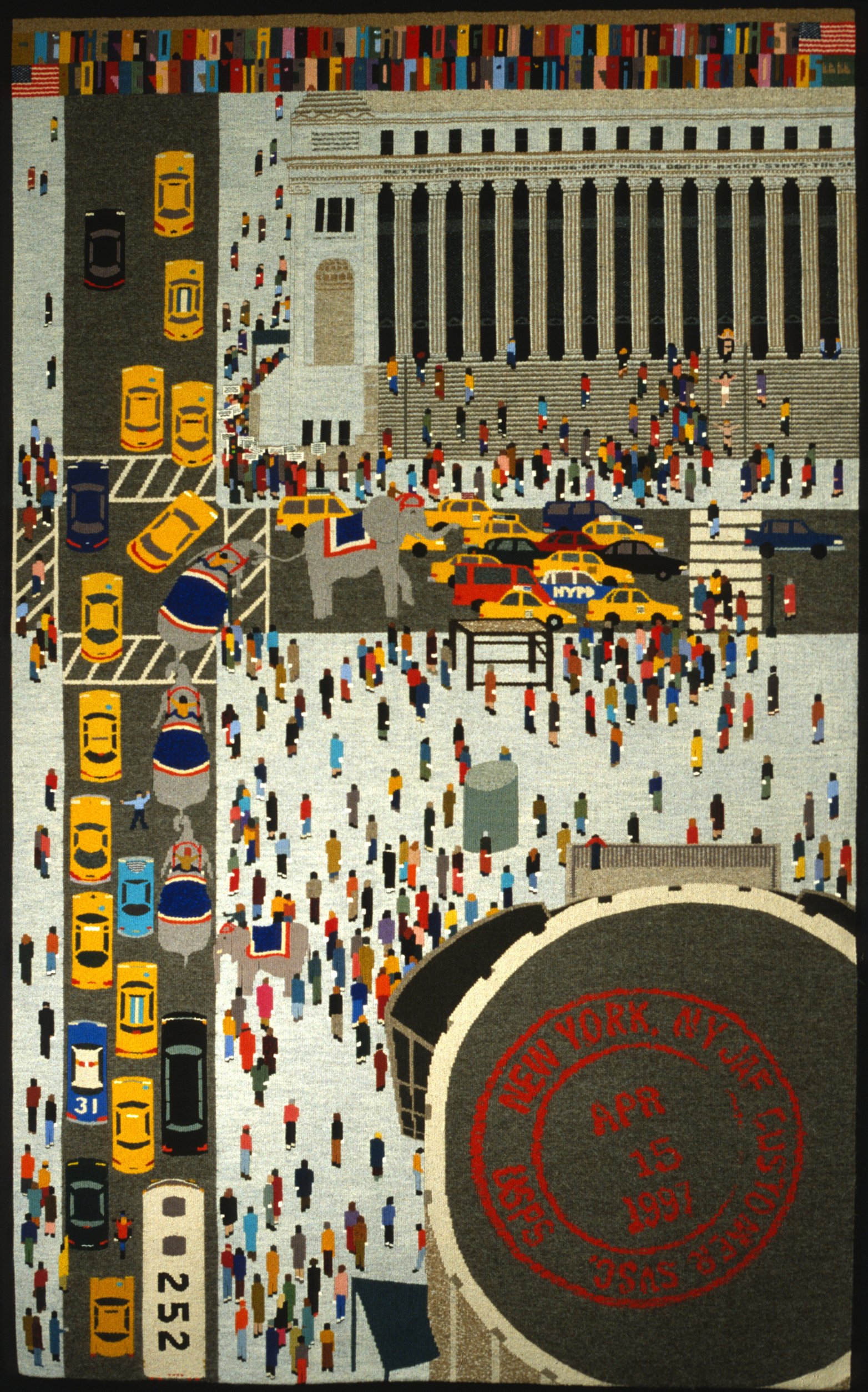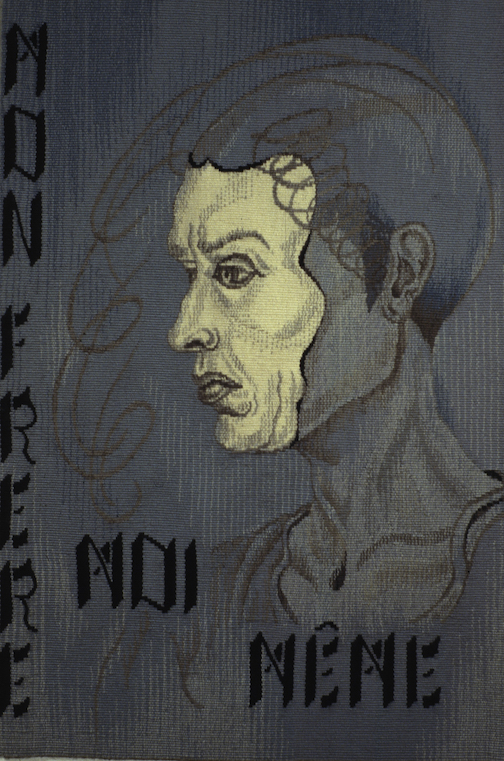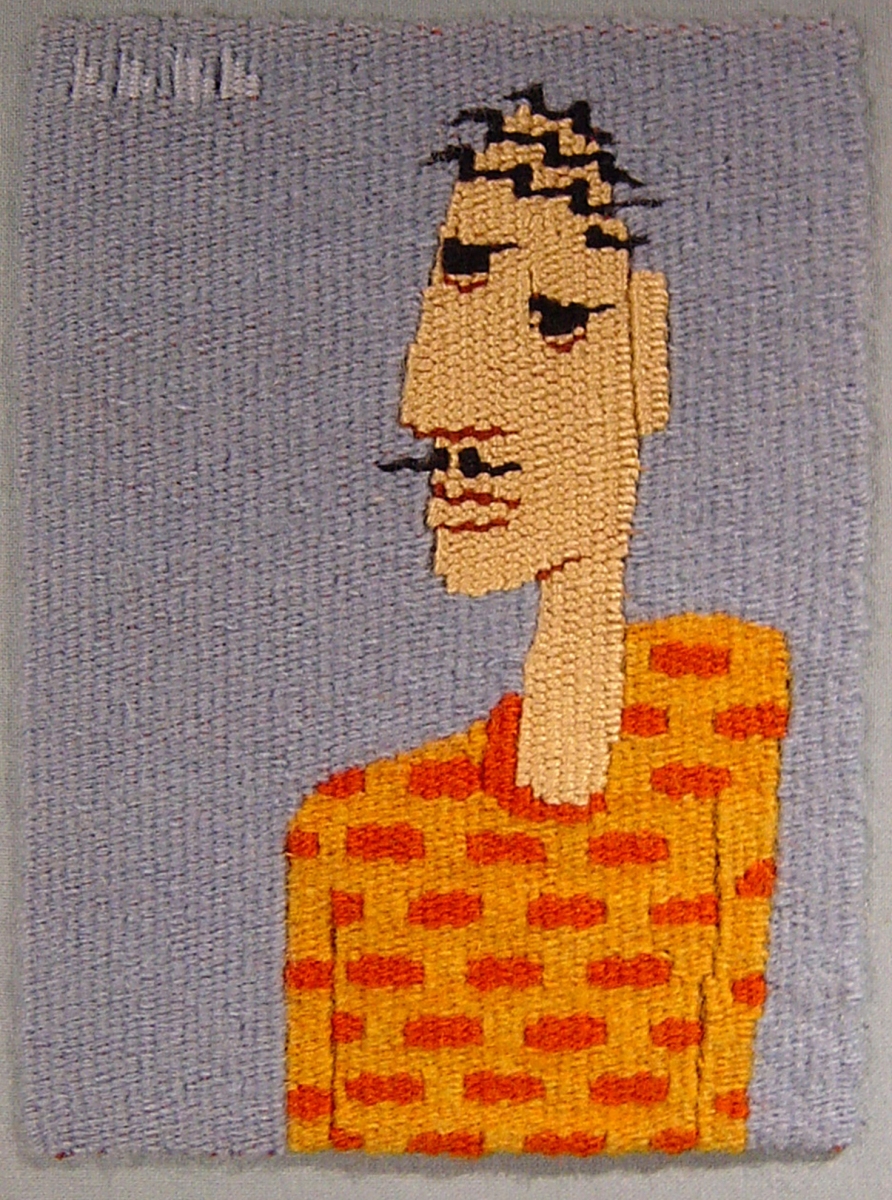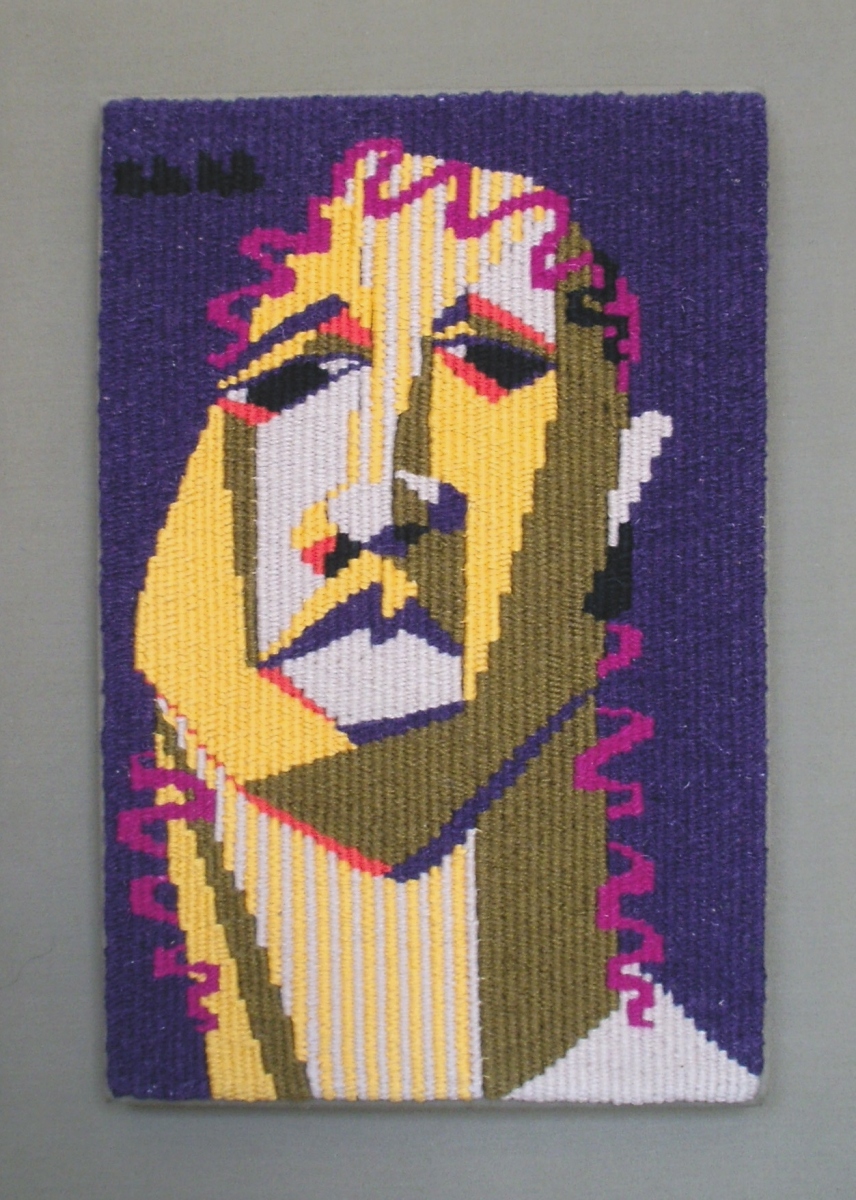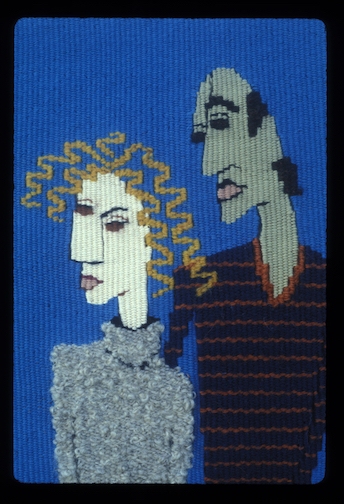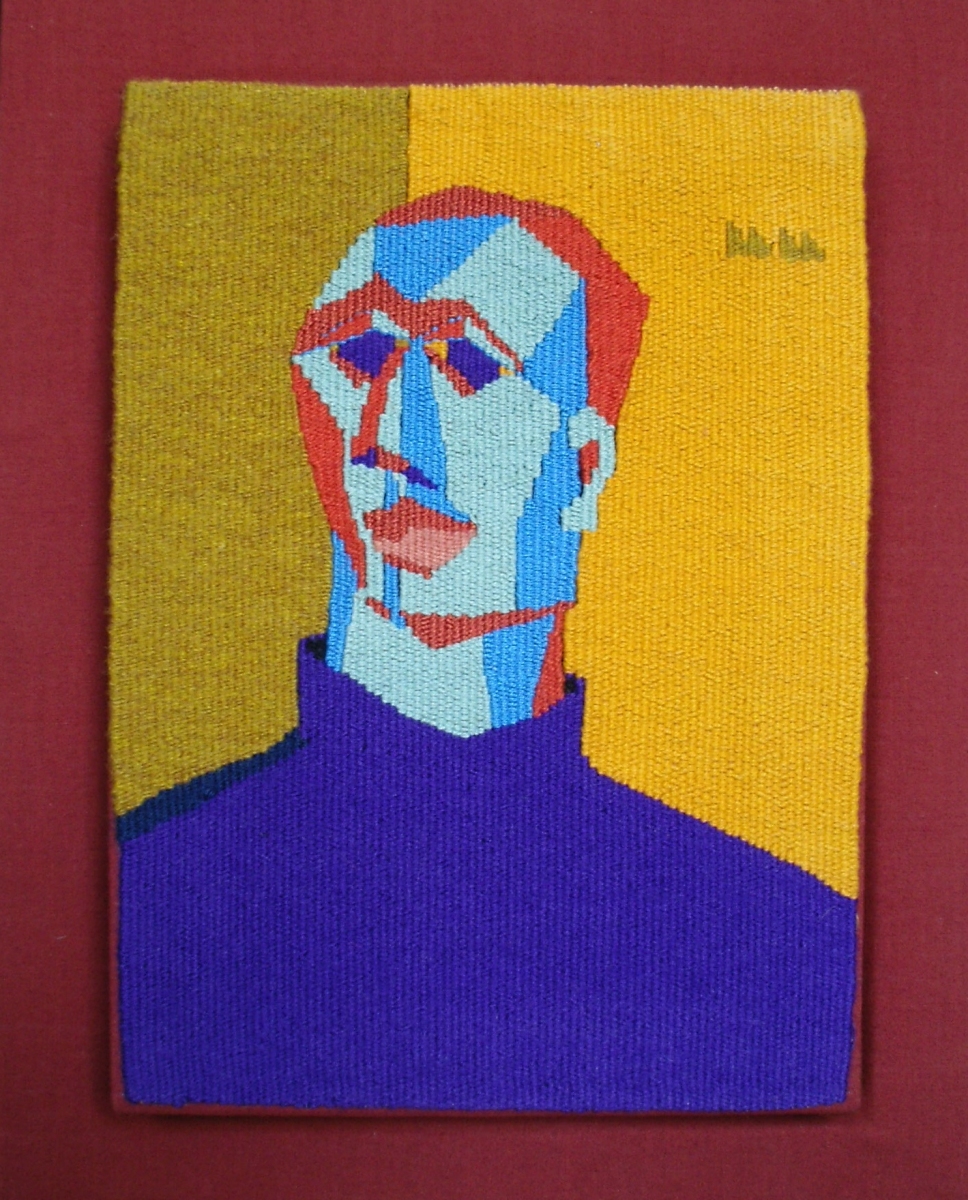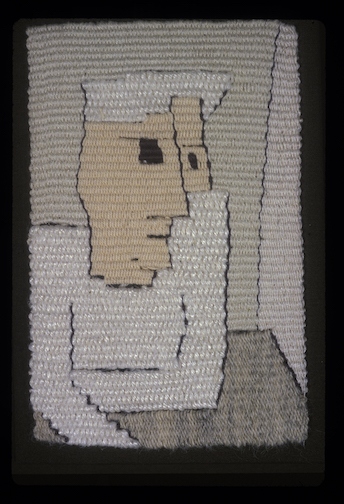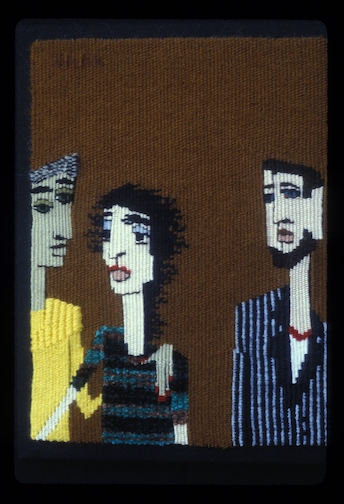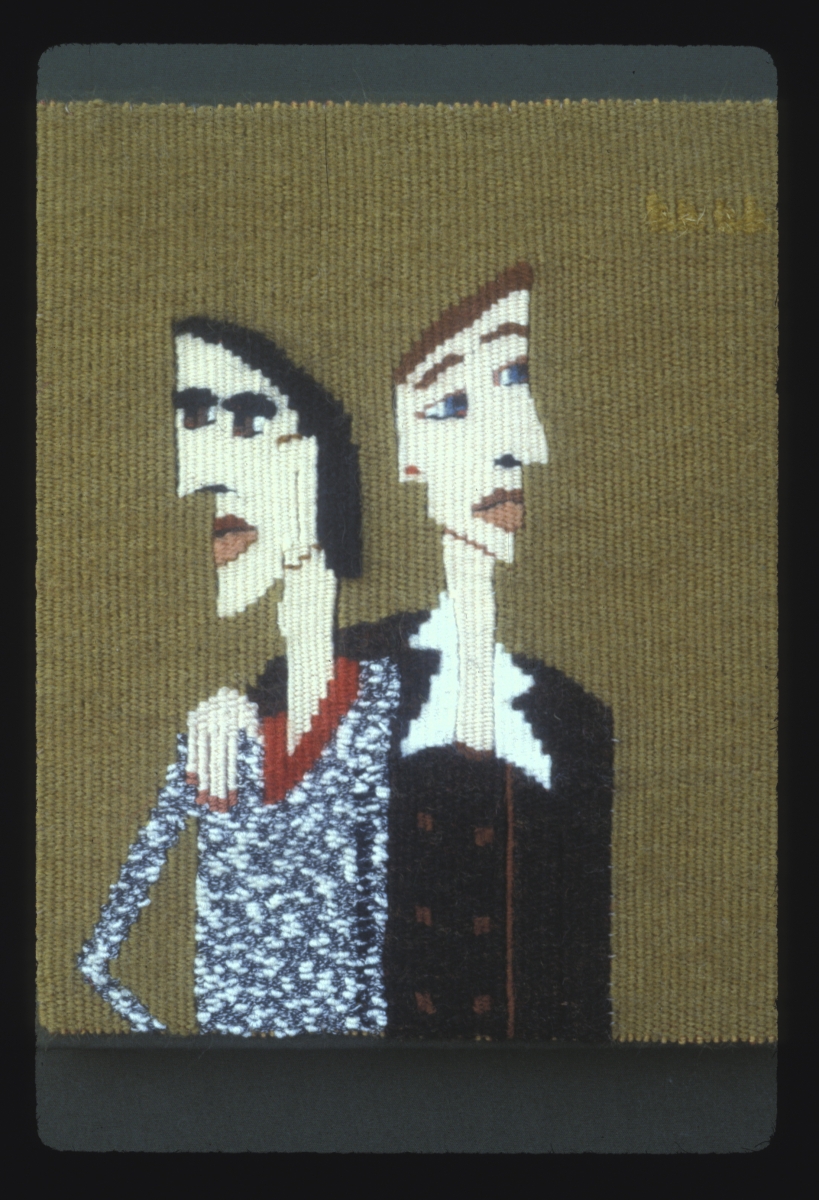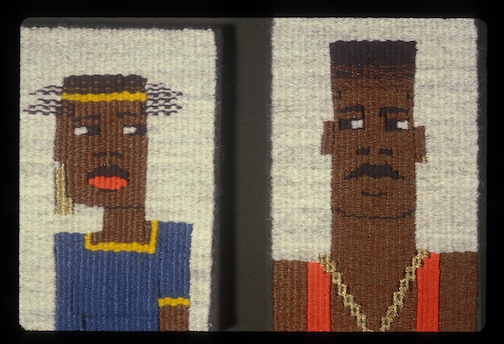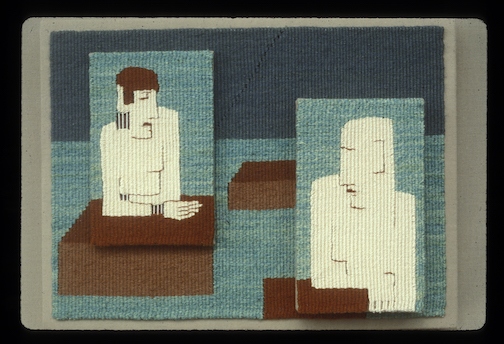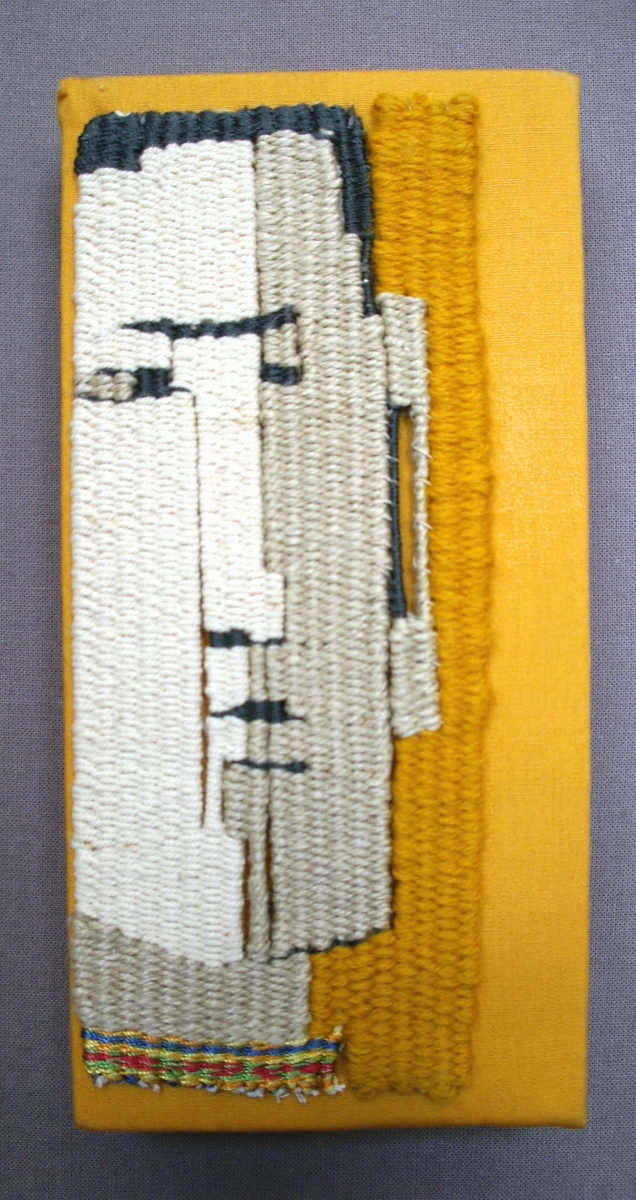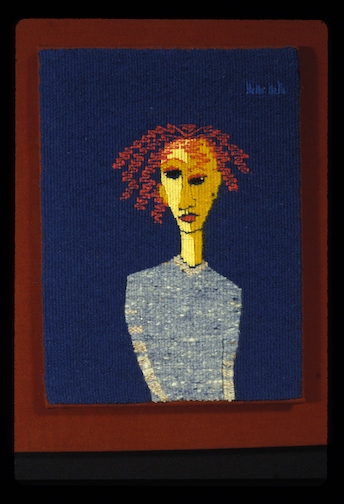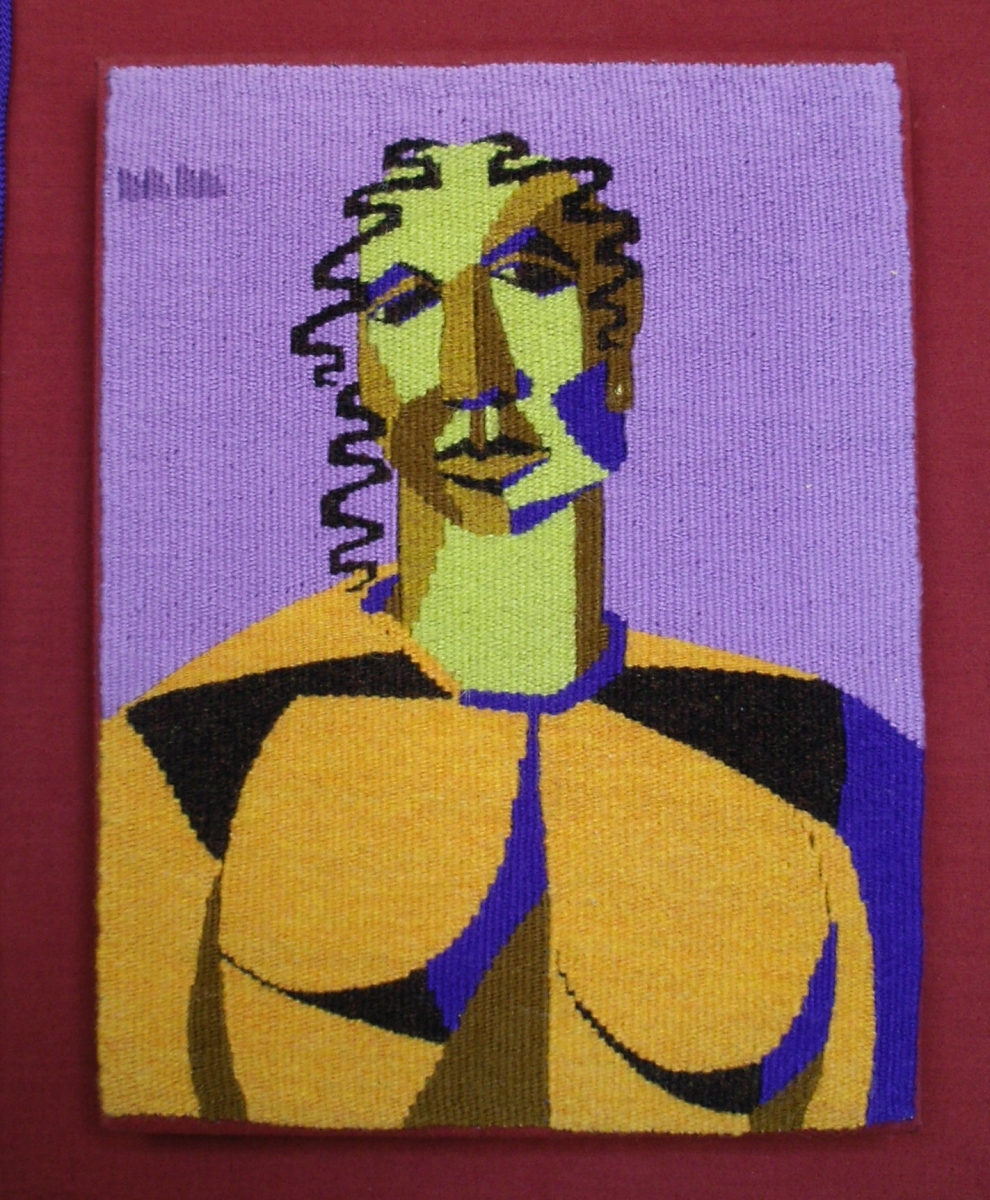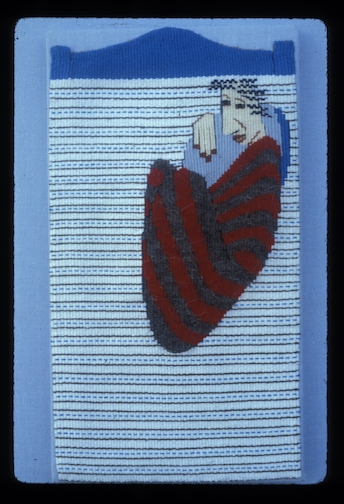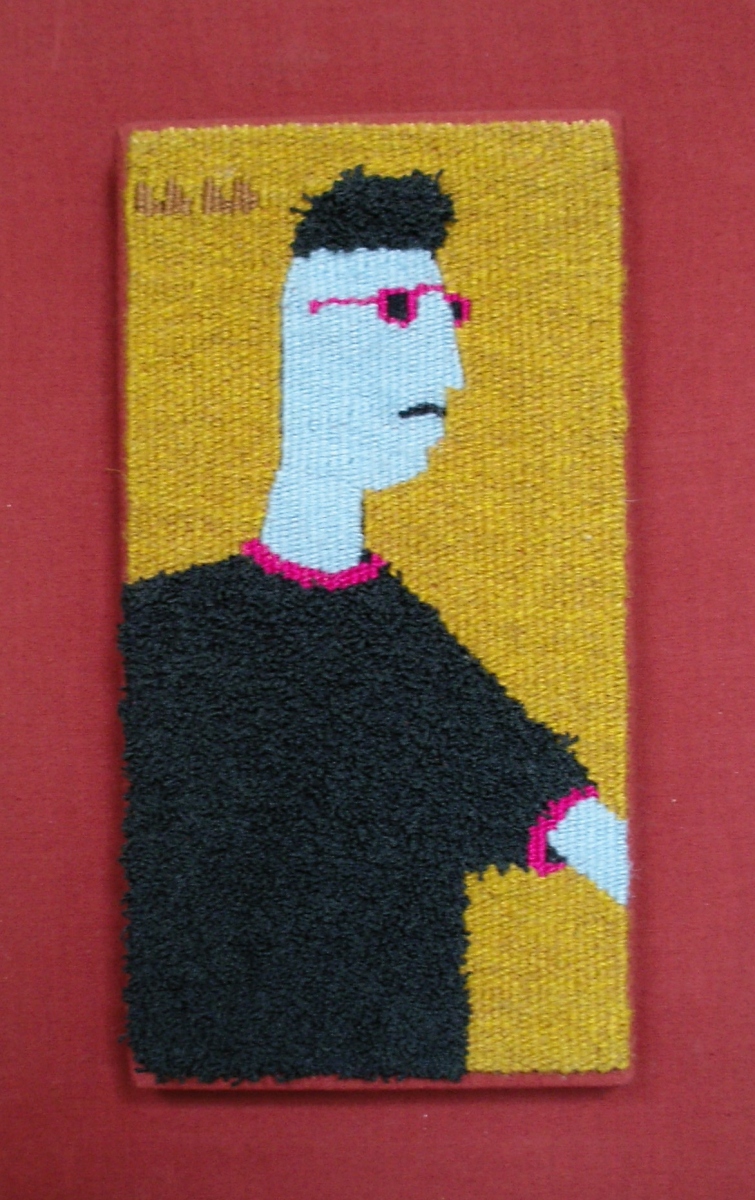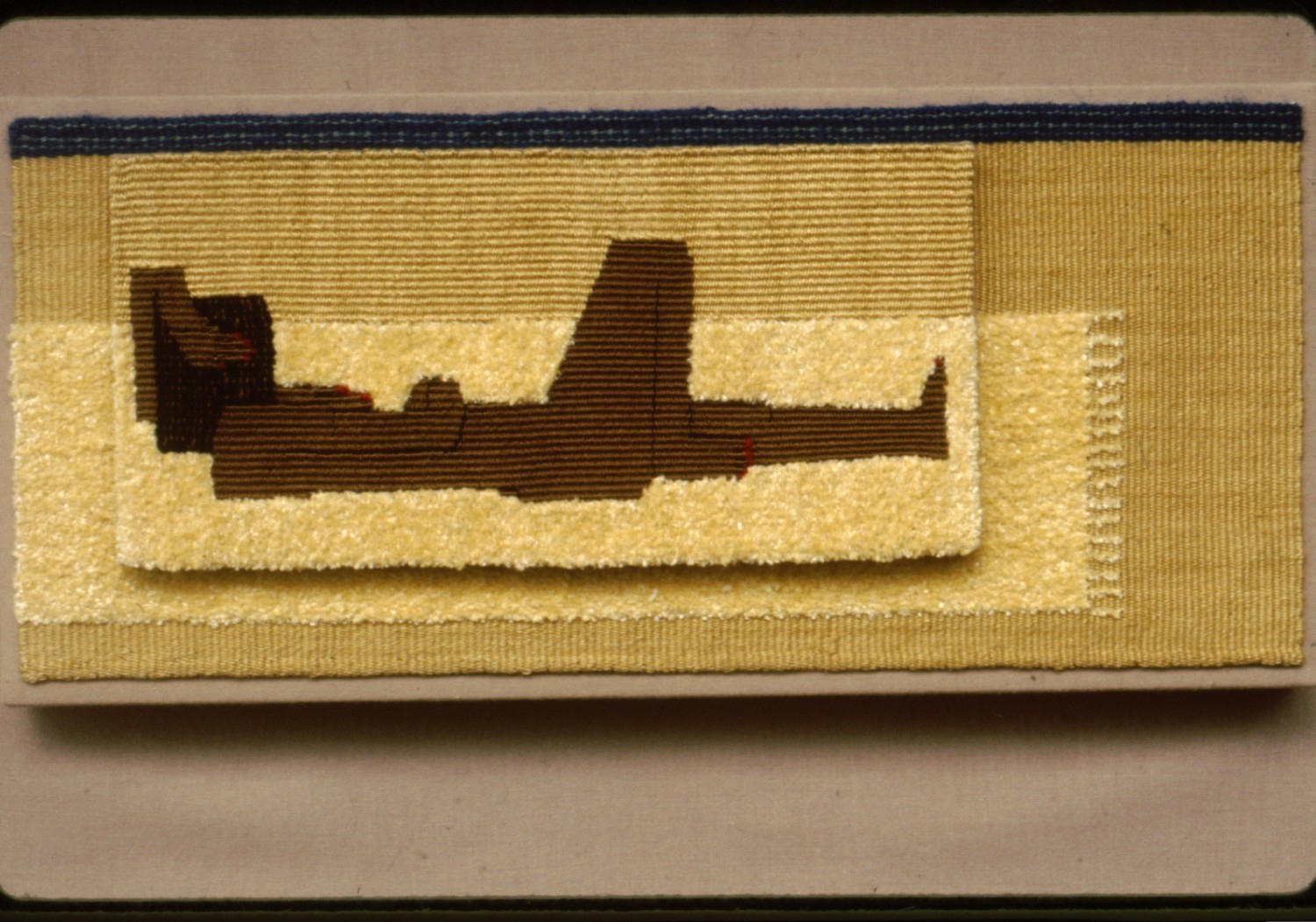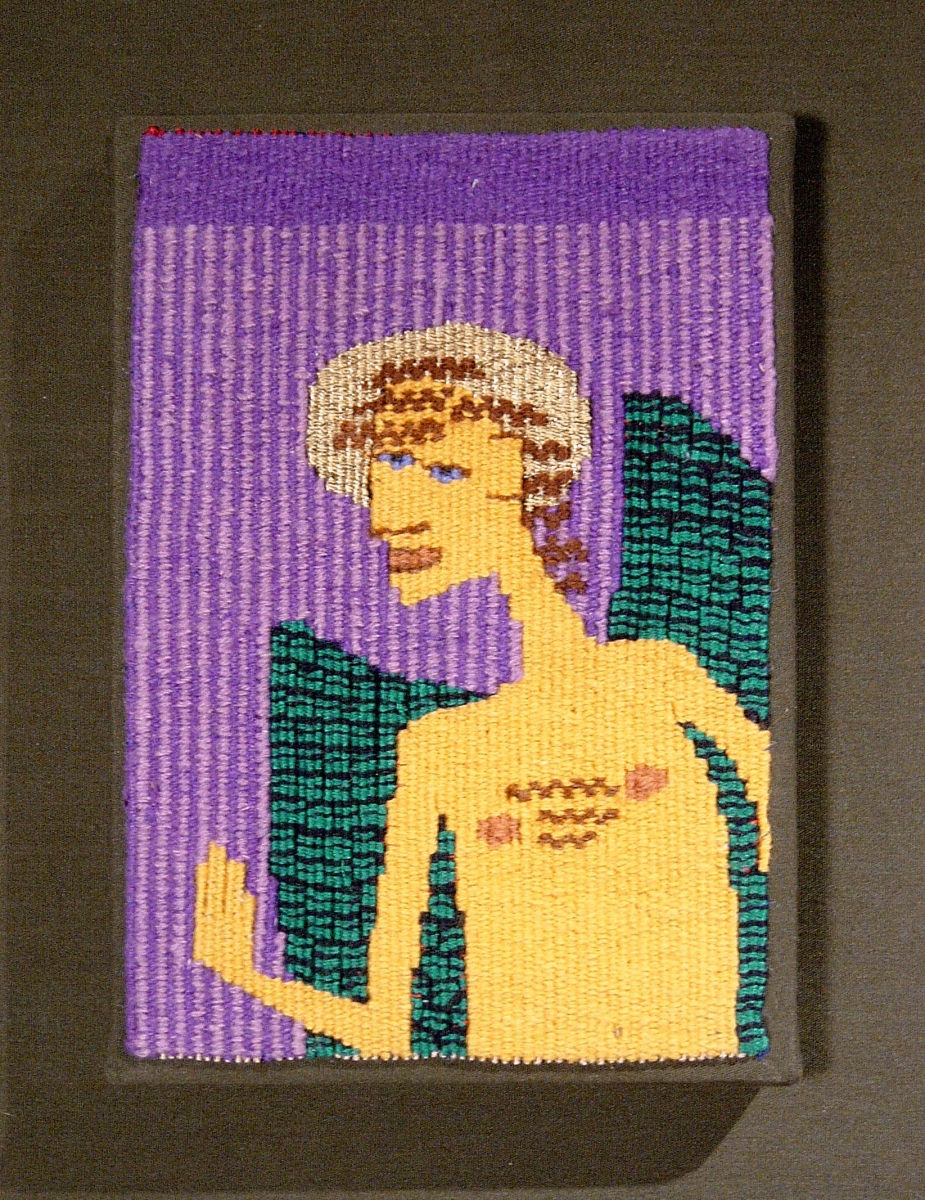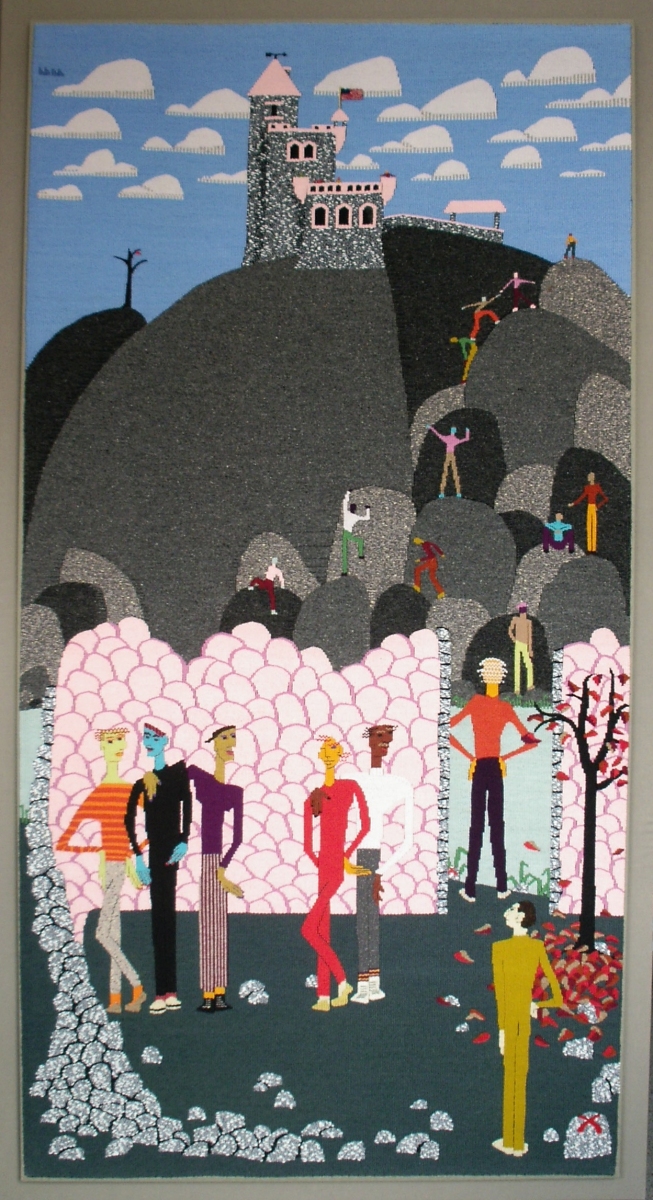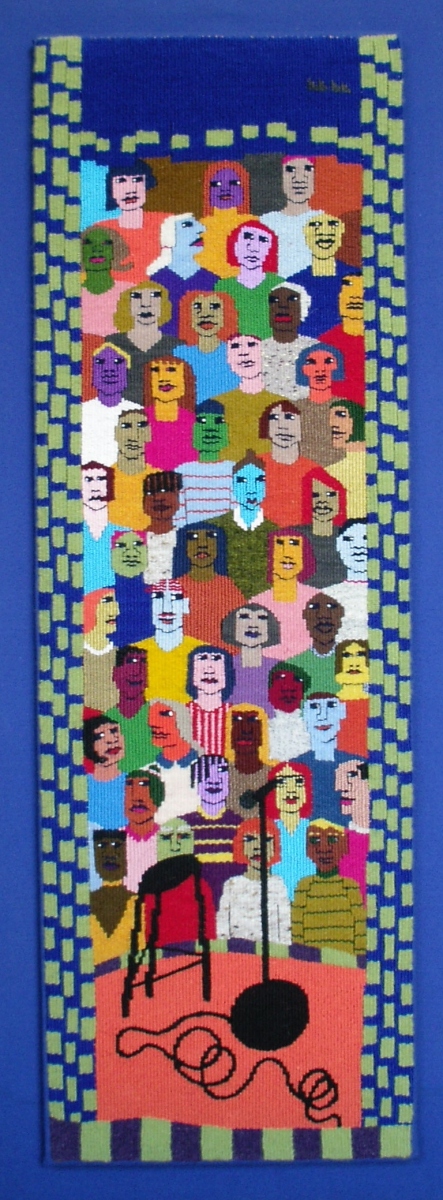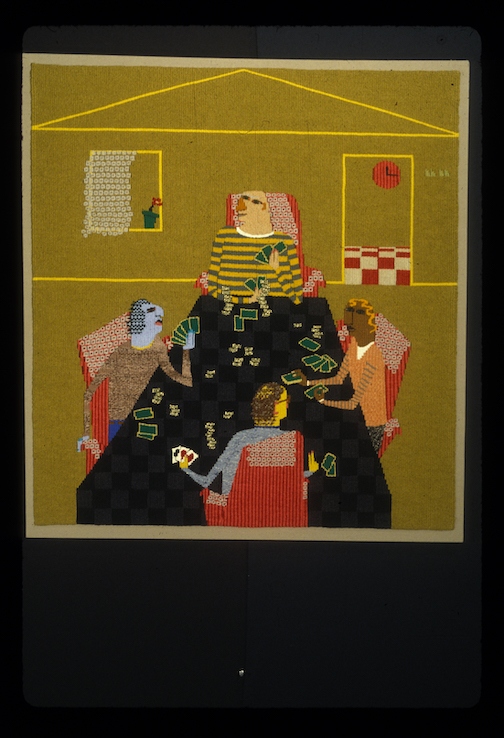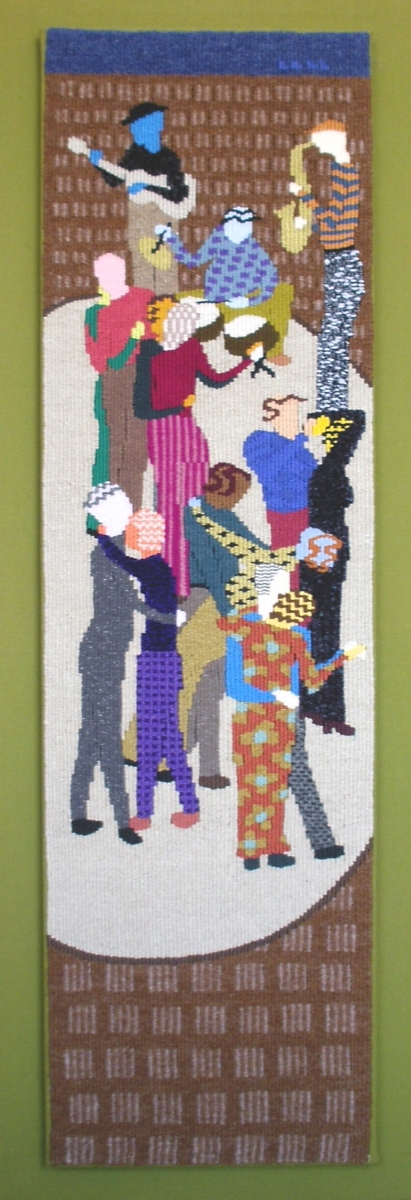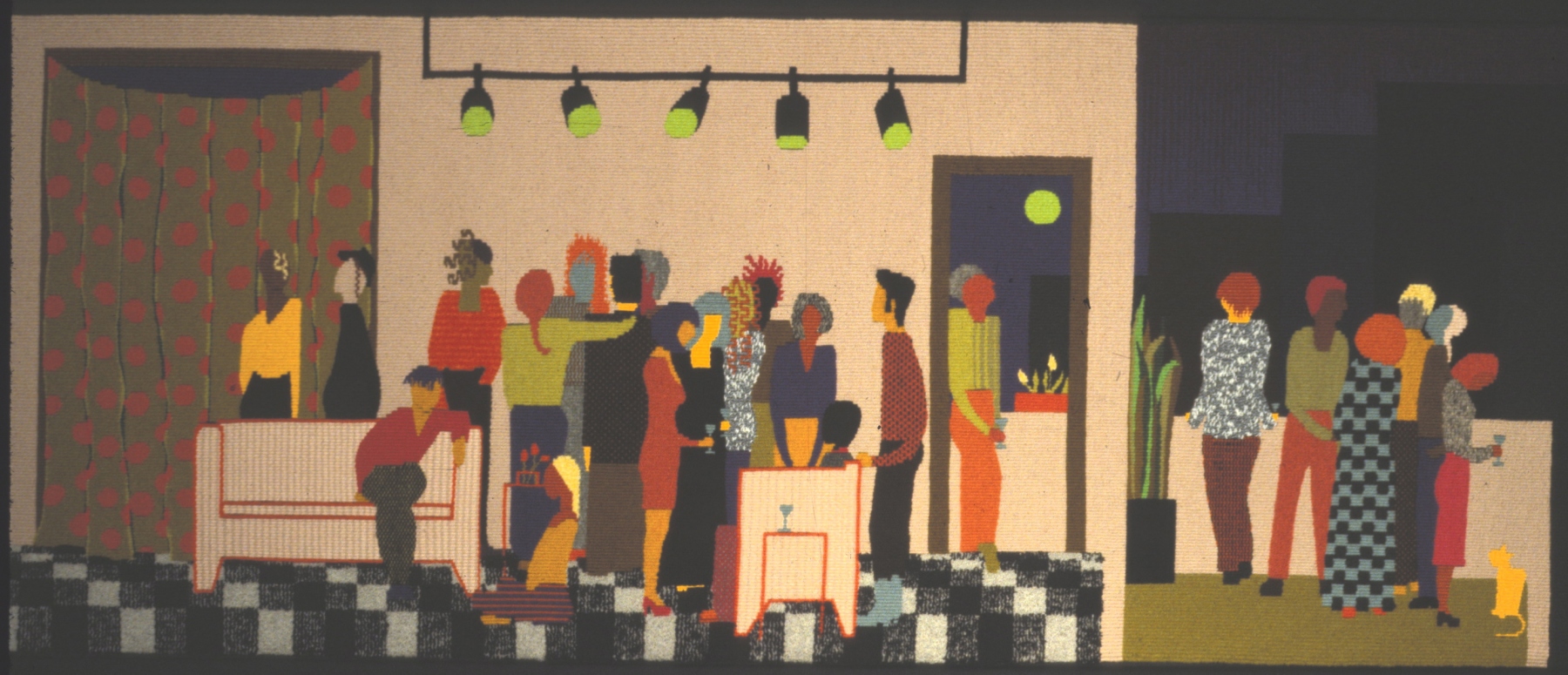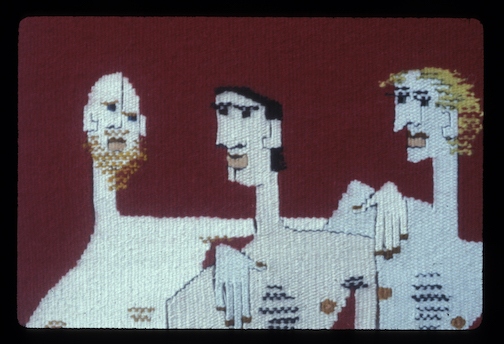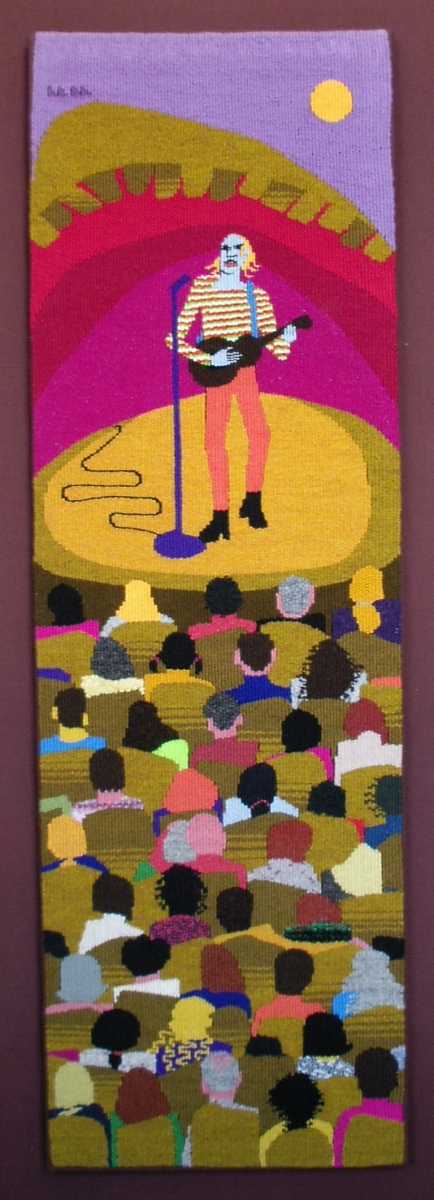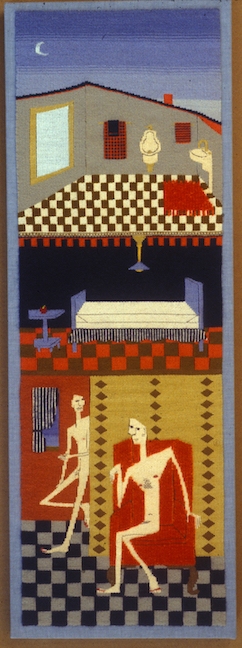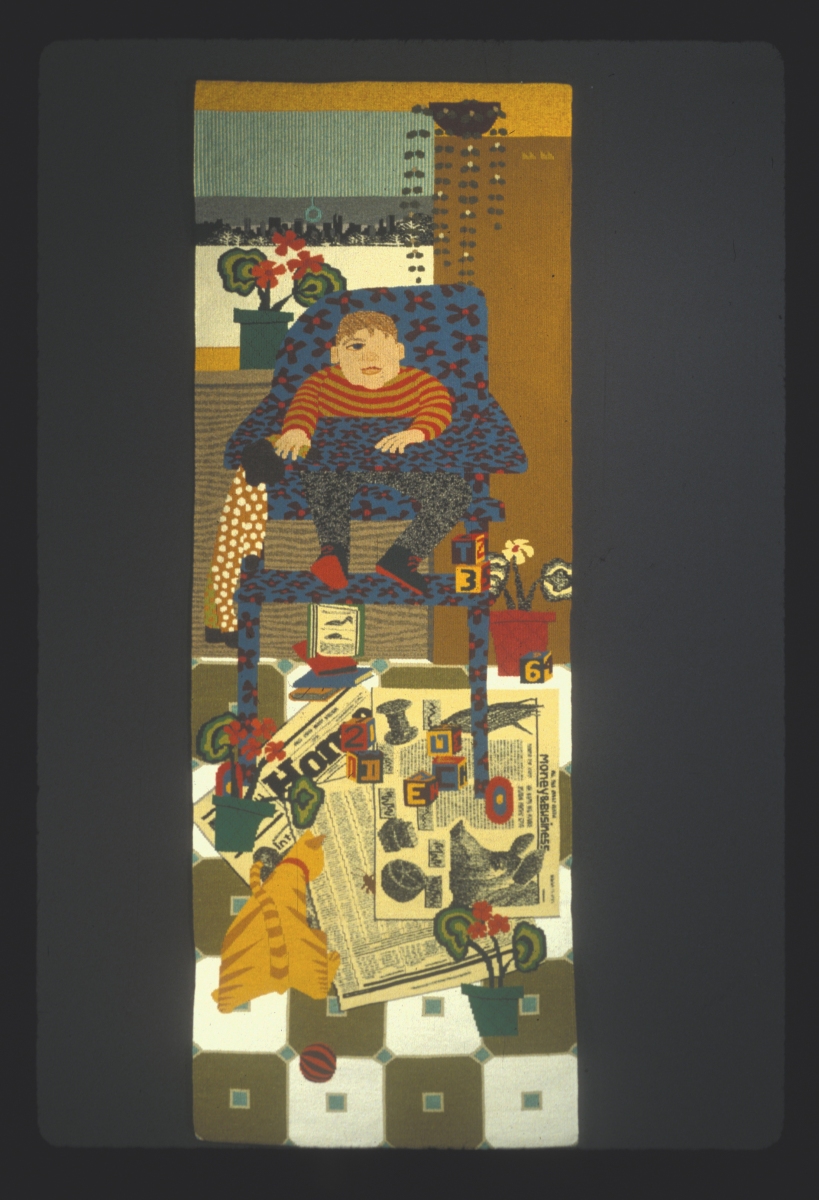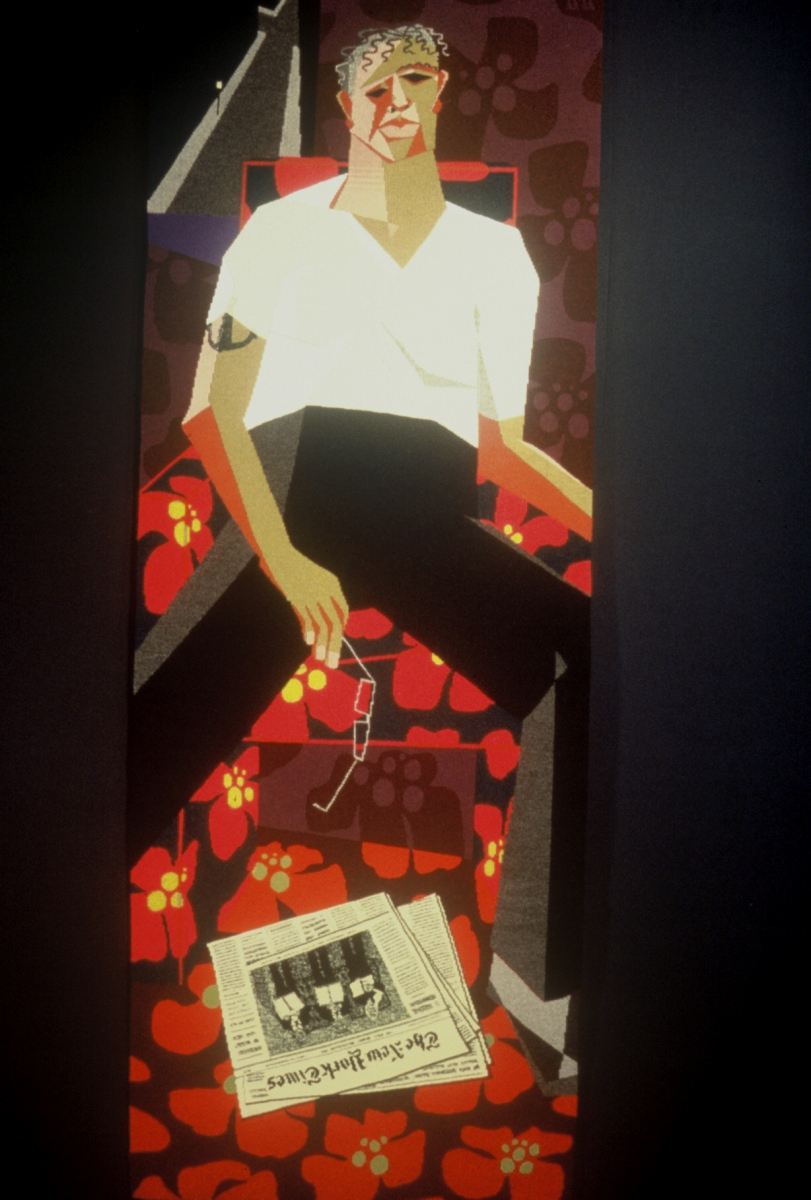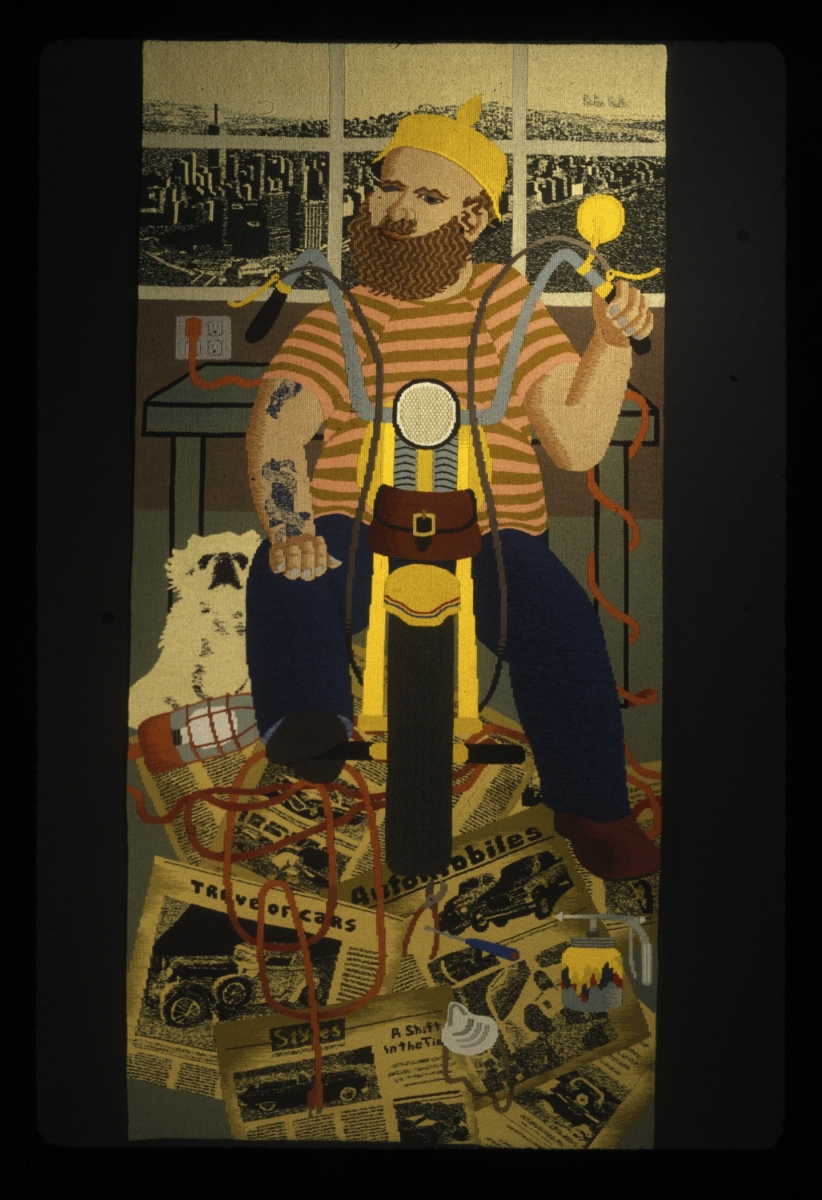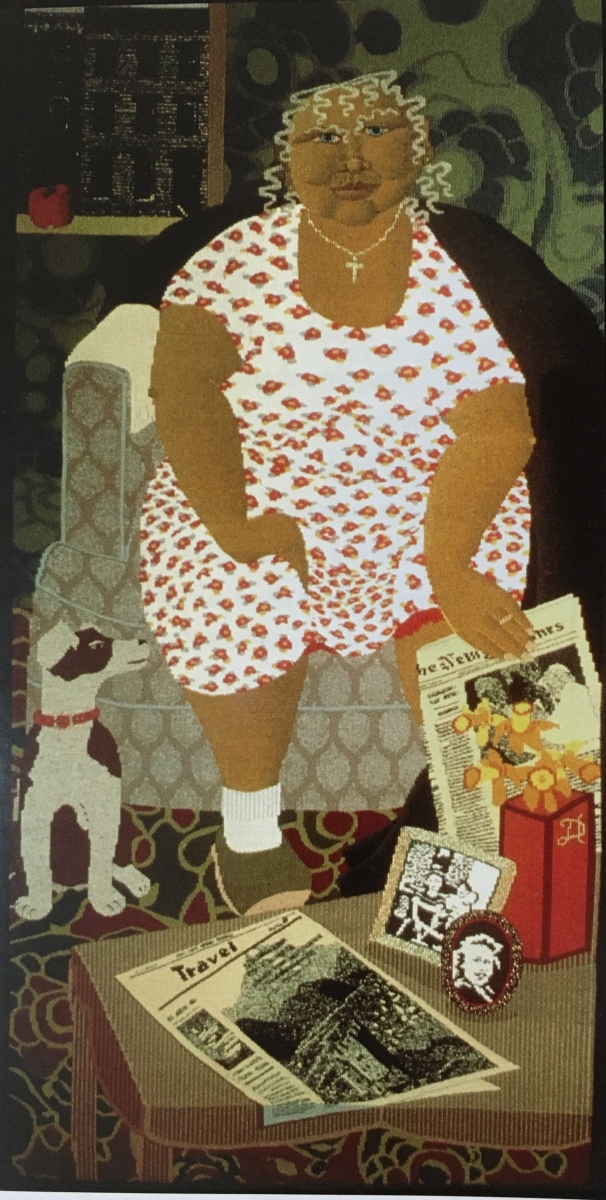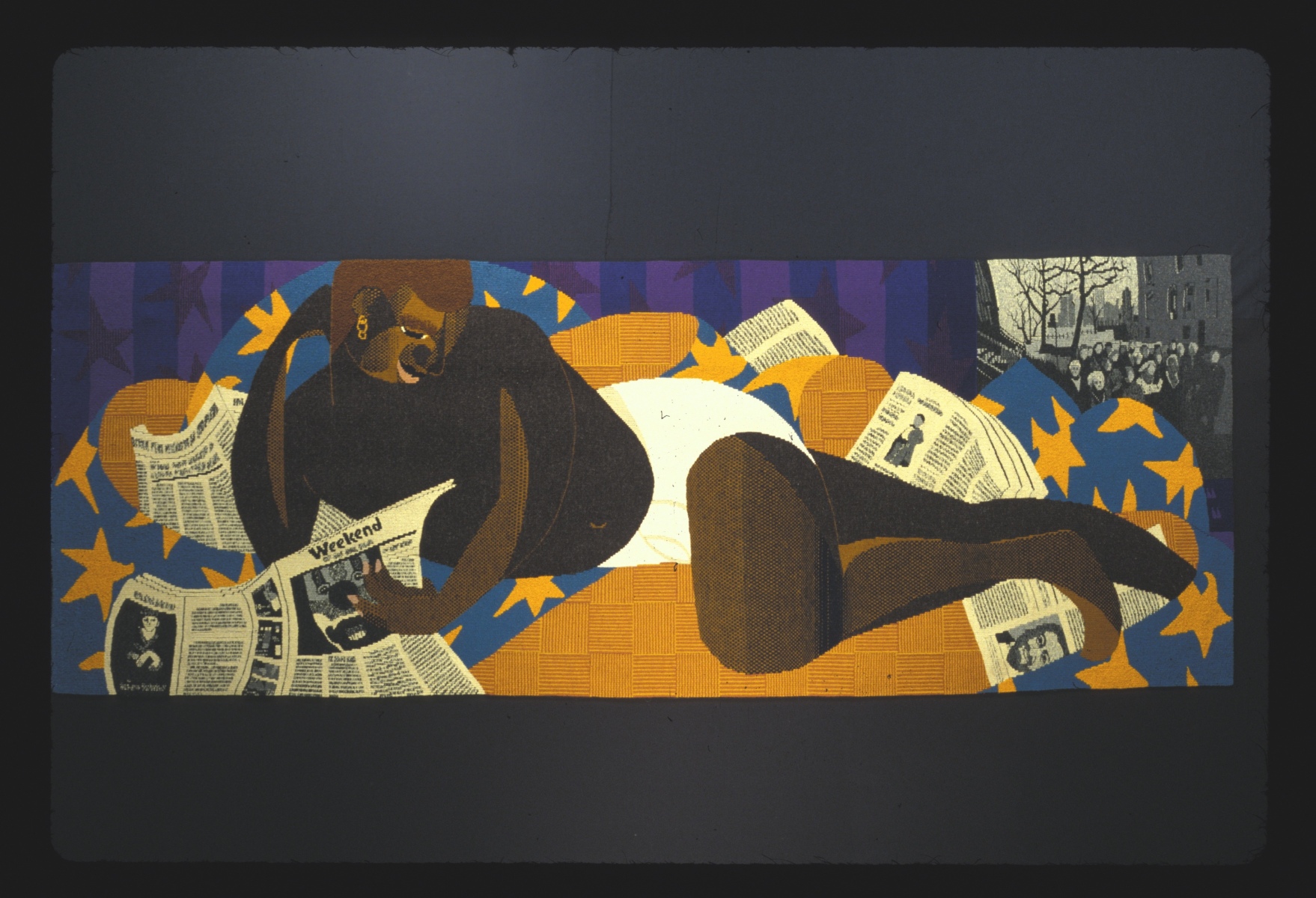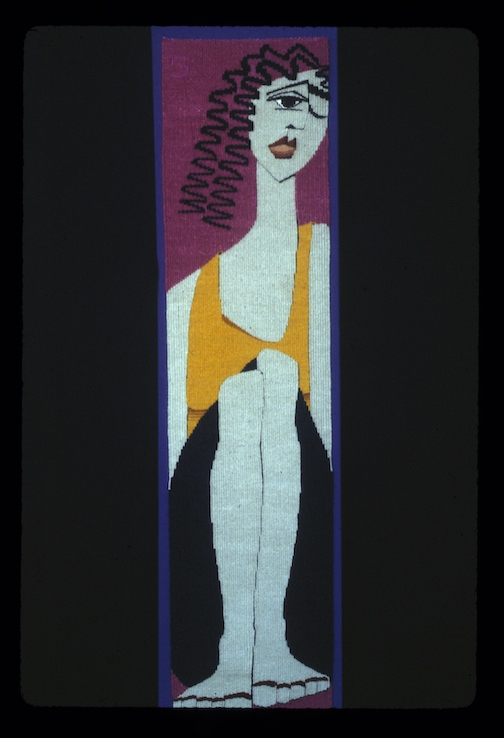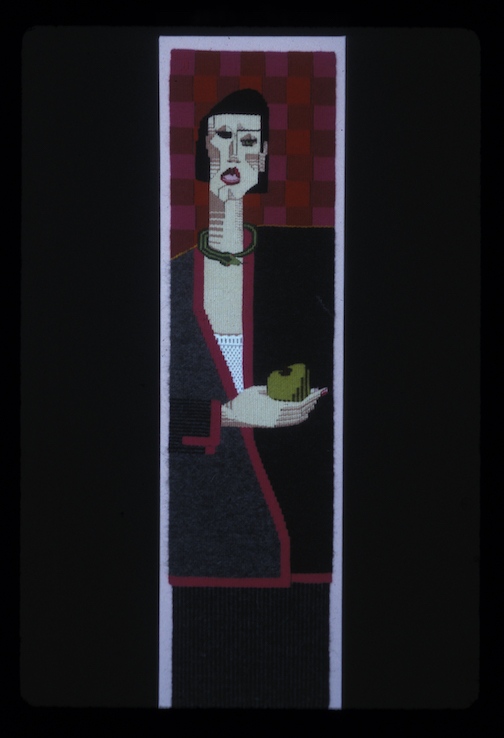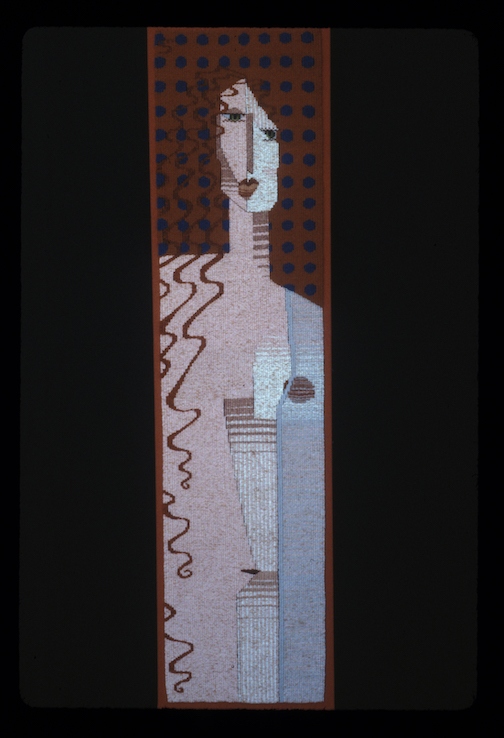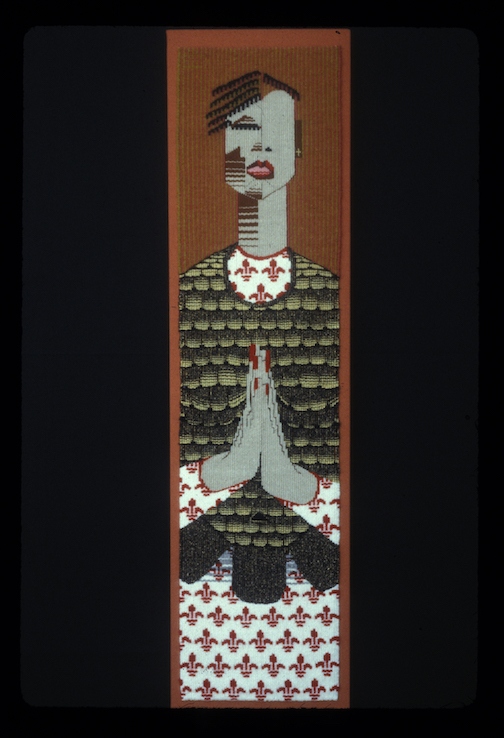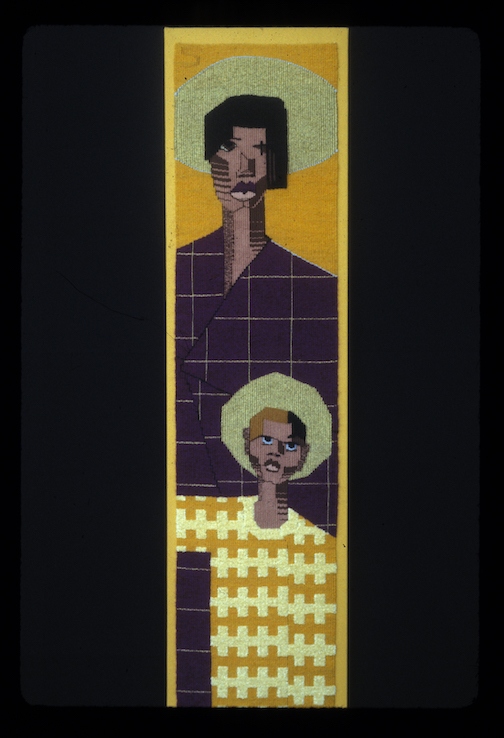“Mon Frère Moi Meme ,” 28” x 19.5.” Wool warp & weft.
My beginning explorations into tapestry weaving began, like many others in the US, by taking workshops offered by teachers and professionals like Mary Lane, Jean Pierre Larochette and Yael Lurie, and in France with Michele Mesnage. With their tutorage under my belt I was fortunate to be qualified for an apprenticeship and job at the Scheuer Tapestry Studio in New York City.
I grew up in a small rural farm area with very few surrounding families. When I moved to New York and was surrounded by millions of interesting faces, it changed how I saw the world. In addition, opportunities like studio work in drawing and painting at the Art Student League, with a focus on human anatomy, added to the mix of my interests. Working at the Scheuer Studio honed my weaving skills. Later study, for several semesters at Les Gobelins in Paris, for perfection of technique, firmly positioned me to embark on an independent profession and life as an artist/weaver.
American primitive paintings have always been a favorite genre of portraits for me. Their ability to capture and enlighten facets of a personality and position, while not necessarily rendering their features in absolute realism, but more by mood, fascinated me. The inclusion of elements that subtly hint at the person’s life add to the richness of these portraits.
And so, I began a foray into tapestry portraits, both large and small. I soon realized the advantages that the tapestry medium offered. Clothing, hair and other parts of an image could be enhanced by the use of different fiber textures, adding another tactile facet, in opposition to the flatness of watercolor or oil. This reinforced the work’s identity as a textile. Working very small at first allowed this exploration to grow and resulted in series of larger works based on both family (New York Times Series) and historical legends (Women in History Series), expanding into group scenarios, such as “The Party,” and eventually into large format urban landscapes (see Urban Landscapes).
Click on images to enlarge slide shows and see captions.
Small Format Portraits
This sample group of small tapestries represent some of my explorations with relationships of color, texture, mood, expressions, and multiple tapestries assembled. All warps are cotton. Weft materials include wool, cotton, silk, linen, nylon, ramie, chenille, boucle, gold thread and various other yarns.
Scenarios
The materials in these tapestries include: cotton warp; wool, cotton, linen, silk, rami, chenille, boucle, gold thread & various special miscellaneous fibers.
New York Times Series
Women in History Series
